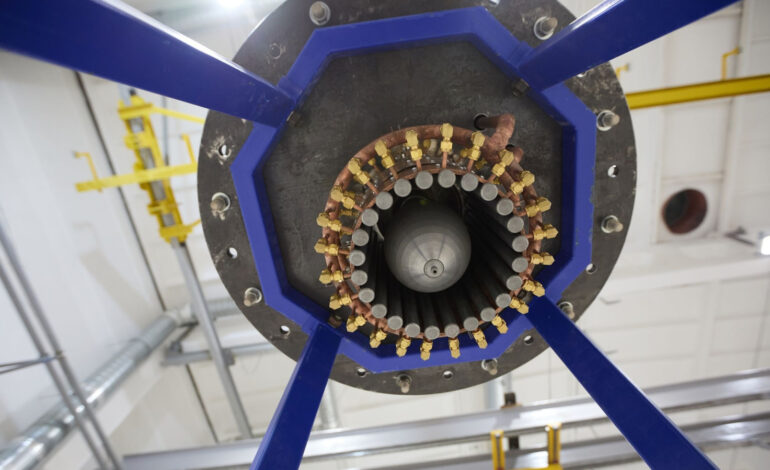Russian Prototype Plasma Engine Aims for 30-Day Mars Travel

Scientists at Rosatom, Russia’s state nuclear corporation, have unveiled a groundbreaking prototype of a plasma propulsion engine that could significantly reduce travel time to Mars to approximately 30 to 60 days. The innovation, developed at a laboratory in Troitsk, replaces traditional combustion methods with a system that accelerates ionized hydrogen atoms through electromagnetic forces.
The prototype generates a thrust of just 6 newtons, which is modest compared to conventional rocket engines. However, it boasts a thrust capability that is about 60 times stronger than that of existing ion thrusters, such as NASA’s Dawn spacecraft. This sustained thrust can maintain high velocities over extended periods, with lab tests demonstrating speeds reaching approximately 100 kilometers per second (about 62 miles per second). This performance is roughly 25 times faster than traditional chemical rockets.
Rather than consuming vast amounts of propellant like chemical engines, the plasma engine operates on a more efficient energy system. By converting cleaner nuclear-powered electricity into propulsion, the engine eliminates the need for burning fuel. The design utilizes two charged electrodes to create a magnetic field that strips electrons from hydrogen gas, producing plasma. This plasma is then expelled from the engine, generating thrust.
Although the thrust generated per pulse is relatively small, the engine’s capability to run continuously allows it to build momentum in the vacuum of space. Operating at approximately 300 kilowatts, this engine requires a nuclear power source, as solar arrays would not suffice. Engineers are currently testing its performance within a new 14-meter-long vacuum chamber, focusing on how the system manages prolonged operation and thermal conditions.
The plasma propulsion design shows remarkable efficiency, achieving a specific impulse of nearly 10,000 seconds. This figure surpasses the 4,000 to 5,000 seconds typical of current electric thrusters, indicating a significant advancement in propulsion technology. If engineers can effectively integrate a small nuclear power source, future spacecraft may be able to traverse the inner solar system without the burden of massive fuel reserves or the necessity of precise launch windows.
Reducing travel time from a year to just a few weeks could have profound implications for human missions to Mars. Shorter journeys minimize astronauts’ exposure to cosmic radiation and mitigate the adverse effects of prolonged microgravity. If Rosatom’s plasma engine performs as expected, it could pave the way for round-trip Mars missions that require less shielding and present fewer health risks.
This development is part of a broader push for advanced propulsion technologies. NASA is exploring nuclear-powered rockets, while private companies are investigating VASIMR plasma drives, and European researchers are experimenting with water-based propulsion systems for small satellites. What distinguishes Rosatom’s contribution is the potential scalability of its plasma propulsion engine, which could serve as a high-power electric engine for deep-space cargo missions or crewed transports within the next decade.
Despite the excitement surrounding the plasma engine’s capabilities, skepticism remains until tangible evidence can confirm its performance. However, the innovative fusion of plasma physics and nuclear energy represents a promising step toward making Mars more accessible as a destination measured in weeks rather than years.






